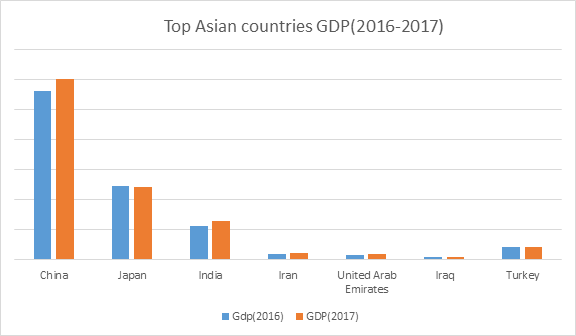Iran suited at the crossroads of the Central west, Asia, and South Asia, linking Middle East, Asia and European countries together. Iran ranks the 18th largest country in the world with 1,648, 196 sq. km
IRANS OVERVIEW
Iran suited at the crossroads of the Central west, Asia, and South Asia, linking Middle East, Asia and European countries together. Iran ranks the 18th largest country in the world with 1,648, 196 sq. km and bordering countries like Afghanistan, Azerbaijan, Armenia, Iraq, Pakistan, Turkey and Turkmenistan. Iran also benefits from strait of Hurmuz which is strategically important as a checkpoint linking Persian Gulf with Gulf of Oman and Indian oceans. Moreover, Iran also contains four important islands like Hormuz, Lark, Qeshm, and Abu Mussa. In addition to that, the Strait of Hormuz is a safe way for importing energy for Eastern Europe, Central Asian countries and Western Europe through Turkey. Moreover, Caspian Sea is the largest inland body of water which lays in north of Iran and interlinks Iran with Russia, Azerbaijan, Turkmenistan, and other CIS countries and is essentially important for transferring Gas between Europe and CIS countries.
Iran’s Geographic Position and its abundance amount of Natural resources and fossil fuels have empowered Iran in becoming one of the strong partner of OPEC in exporting oil and gas.
Iran enjoys from various range of landscapes such as wide and pervasive mountain ranges, desserts, seas, forests and etc. Zagros and Alborz are among the most important mountain ranges in Iran which are located in north-west and southern shore of Caspian Sea.
Population
Iran is the 18th most populated country in the world with a population estimated around 82.01 million in 2018. The major 89% of the population are Shia Muslims and remaining 10% are Sunni Muslims. Millions of minorities from various ethnic, religious, and linguistic backgrounds also reside in Iran. Among these groups are ethnic Kurds, Baluchi, and Azeri. Iran has small group of Baha’i, Turkmen, Christian, and Jewish communities. There are 31 provinces in Iran which means that six largest cities have more than 1 million people and 61 cities having population between 100.000 and 1 million People.
Language
The official spoken language in Iran is Persian. But there are also minority languages like: Azerbaijani, Kurdish, Gilaki, Lori and Arabic.
Political system
After the (1978-1979) political revolution, the constitution was formed and the presidential system was established. The countries most important organ is supreme leader known as Ayatollah Ali Khamenei with the presidency of Hassan Rouhani. The supreme leader is responsible for main domestic and foreign policy and controlling Iran’s intelligence and security operations. He also has the power to elect the twelve members of council of guardians. The authority power that controls the parliament operations. The current president Hassan Rohani will be in authority for 4 years. The parliament of Iran consists of 290 members who are elected for 4 year terms.
Economic system
Iran has the fifth highest value of natural resources like $27.3 trillion in 2016. Another advantages of investing in Iran would be its great young human Resources. More than two thirds of the population are under the age of 30. Real GDP growth is expected to be around average 2.2.
The Republic of Iran is a transition economy which is being slowly transformed from centrally planned economy to a free market.
The market Value of Tehran’s Stock Exchange is recently 87 billion dollars or 21.5 percent of Iran’s GDP in 2014. It also ranks 136 on Transparency international consumption index. It seems that most companies like oil, mining, telecommunication, petrochemicals, automobiles and construction are owned by governmental companies.
Iranians top economic rankings in the world
In 2016, Iran ranked 18th in GDP on PPP and 2nd largest economy in the MENA region after the Saudi Arabia. Iran also ranks 4th in oil reserves in the world after Venezuela, Saudi Arabia and Canada.
The most important resources of Iran can be named as oil, gas, Iron, cement, steel, petrochemicals and pharmaceutical products.
Iran’s Economic Indicators
The Inflation rate has been increasing over the last years due to the rising price levels of the production costs. The average inflation rate has reached 9.9% between Aprils – December 2017. In the below table the detailed information can be obtained.
Employment and unemployment rate: Iran’s unemployment rate is expected to be 12.4% in 2017 and 12.2% in 2018.
Foreign Trade: Iran’s export has said to be 88.576(000) tons in volume in 2017 and import has also become 26.595(000) tons in volume.

According to the chart above by the International monetary fund world economic, Iran ranks 10th largest GDP in the Asian countries. As it indicates, China, Japan and India are the top countries in GDP among the Asian countries.
Iran’s Top Industries
Iran benefits from wide variety of Oil and Gas resources. Besides industries like Petrochemicals, Pharmaceutical, Mining, Automotive, Insurance and banking are other factors which have high influence on GDPs Growth rate. For these reasons, governmental officials have provided great amount of facilities and incentives to attract foreign investments in these areas.
Some detailed information are provided to improve reader’s knowledge about these sectors are in next article.





